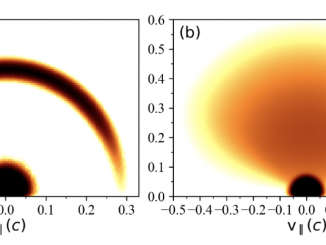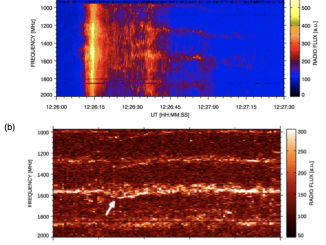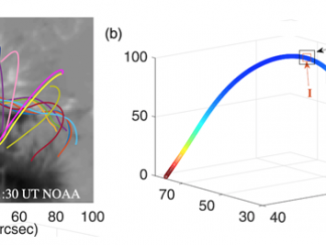Observation of an Extraordinary Type V Solar Radio Burst: Nonlinear Evolution of the Electron Two-Stream Instability, by A. O. Benz et al.
Solar type V radio bursts are broad-band continua associated with type III bursts, which are generally believed to be caused by coronal electron beams. Type V bursts appear sometimes for 0.2 to 3 minutes as a continuum following an intense type III burst or group of bursts. The spectral peak of type V bursts is generally below 100 MHz. The high-frequency edge is below the start frequency of the associated type […]




